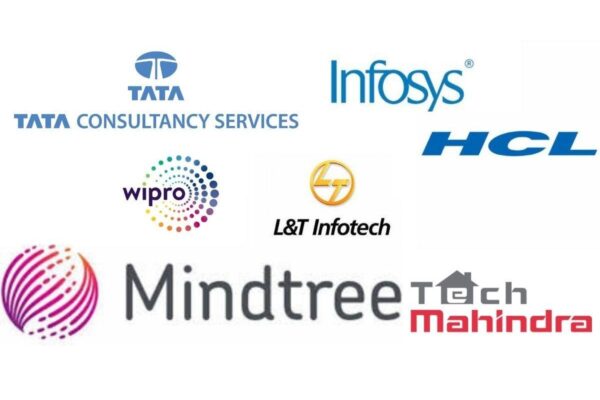A US recession will affect India’s tech hub

A US recession will affect India’s tech hub.
The tech industry in India believes that a US recession is unlikely. The optimistic forecast from Infosys Ltd. predicts that annual revenue growth will rise by 14 to 16 per cent, which is a little higher than the prediction issued just three months earlier by the country’s second-largest software services exporter.
The Bengaluru-based business, which is regarded as the sector’s weathervane, on Sunday presented its results report for the June quarter.
If it is optimistic about orders, there is reason to think that the deal pipeline isn’t closing. Businesses in the US and Europe continue to sign offshore agreements, particularly those allowing them to automate processes and save costs, including those in the banking, manufacturing, retail, health care, and utility sectors.
According to Knight Frank, the Bengaluru office rent increases last quarter by 12 per cent year over year, which is three times higher than increases in Shanghai, Singapore, or Sydney.

In the hub of the world’s coders, more than two-fifths of office space leasing is related to information technology. If tenants are paying more for space, they must be optimistic about the future.
But is that confidence justified? If you look closely at the financial records of IT companies, you’ll see signs of stagflation in the form of diminishing profitability. Even with an almost 24 per cent increase in revenue, Infosys was still able to increase rupee profitability in the June quarter by just over 3 per cent from a year earlier.
Earnings before interest and tax as a proportion of revenue at 20% represents a 3.6 percentage point decrease from the previous year. The current state of affairs is worse than it was for the top outsourcing firm before the epidemic’s huge boost to the business.
In Bengaluru, Infosys’s longtime rival Wipro Ltd. saw its EBIT margin declined to its lowest level since the third quarter of 2018.

That was partly because it hired 15,000+ net new employees, 10,000 of whom were recent grads, in the three months leading up to June 30. (Infosys increased its headcount by more than 20,000 within the same period). Rival HCL Technologies Ltd., which slowed by reducing quarterly net hiring by roughly 2,000, however, also saw a lower-than-anticipated EBIT margin of 17%, a multiyear low.
The margin at Tata Consultancy Services Ltd., the largest Indian IT vendor, was better at 23.1%, although it was still 2.4 percentage points lower than for the June quarter of 2021. TCS management believes that a sustainable rate of quarterly transaction wins might be in the $7 billion to $9 billion range. That represents a “flattish” increase year over year, in Nomura’s opinion.
The margin at Tata Consultancy Services Ltd., the largest Indian IT vendor, was better at 23.1%, although it was still 2.4 percentage points lower than for the June quarter of 2021. TCS management believes that a sustainable rate of quarterly transaction wins might be in the $7 billion to $9 billion range. That represents a “flattish” increase year over year, in Nomura’s opinion.
Pay increases must first be thoroughly thought out. TCS has over 600,000 employees, yet its attrition rate is close to 20 per cent, more than twice as high as it was a year ago. Employee retention appears to be more of a challenge at Infosys, whose attrition increased by over 28 per cent in the June quarter.
Startups that aim to serve India’s domestic finance or e-commerce markets compete with software exporters for the same programmers. Small businesses with private equity funding are becoming less willing to spend money on payroll, but the demand for programmers from employers may be a topic for the following year.
There is now little room for IT services companies to lower salary costs due to India’s high domestic inflation rate, which is currently over 7%.

They’ll all eventually start “pyramiding” to protect their margins. In essence, it amounts to putting a lot of inexperienced programmers under the direction of an experienced project manager and hoping the client will still be happy. More challenging programming will need to be outsourced to smaller contractors, nevertheless, due to newcomers’ low productivity. That is also getting costlier.
The best chances for India’s IT services exporters are a stable US economy, which is their biggest market, and customers that boosted their digital budgets during COVID-19 continuing to place orders.
Clients may still see value in cloud computing, analytics, AI, and even augmented reality, but Mumbai-based broker Nirmal Bang Securities claims that due to “earnings pressure from commodity and wage inflation, supply chain challenges, reduced consumer spending power, higher interest rates, and likely below-trend growth in Western developed economies,” their “willingness-to-spend will be constrained by their ability-to-spend.”
The higher values of the major consumer technology companies, such as Alphabet Inc. or Meta Platforms Inc., won’t be exempt either. The more industrial end, which involves writing code for Western business clients, won’t be either.
India’s Nifty IT Index tripled between the beginning of Covid-19 in March 2020 and the end of last year, but it has since plummeted by 27 per cent so far in 2022. Investors lack the exporters’ confidence in profitability that they do in their order books. Bengaluru will soon experience a US recession as well.




